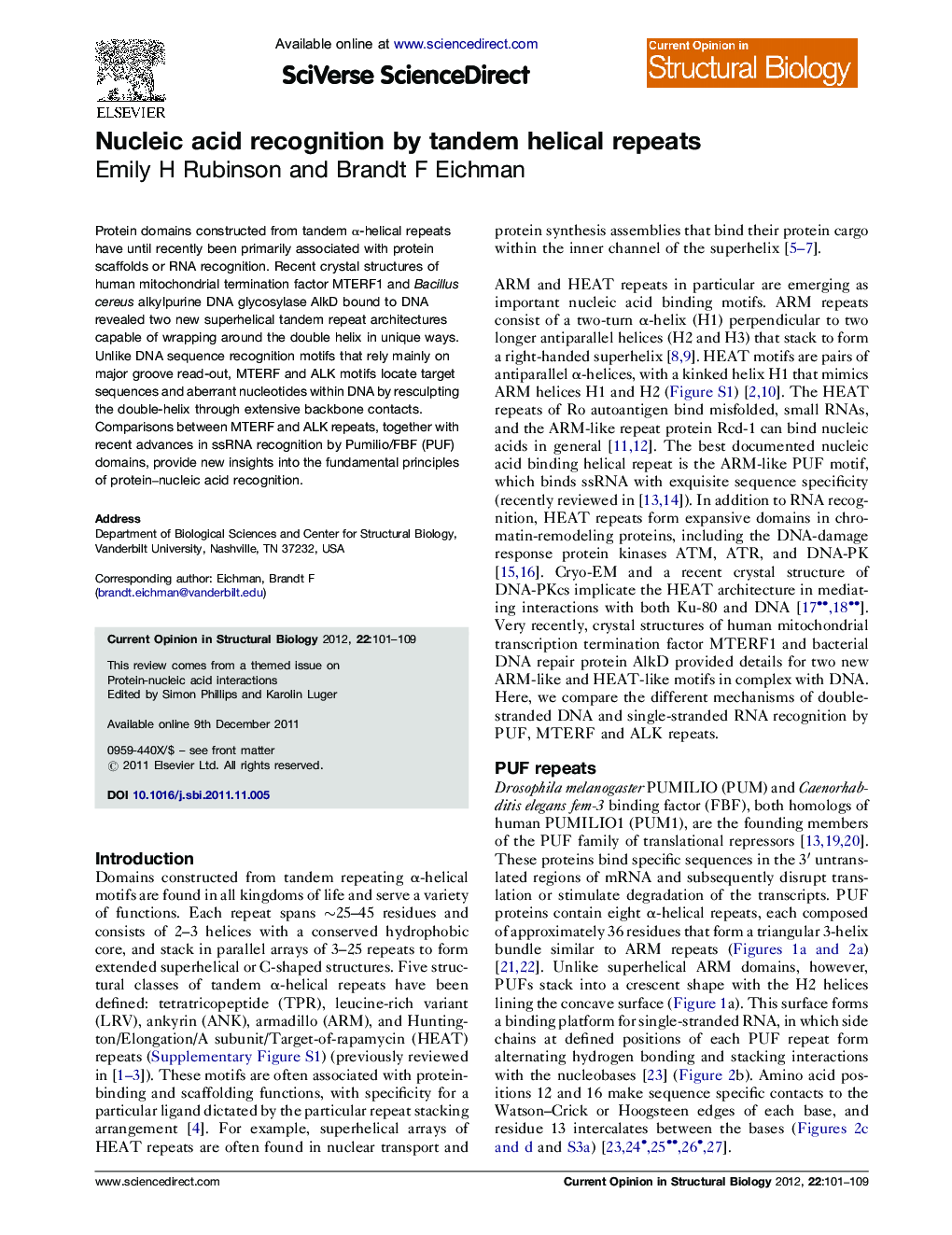| Article ID | Journal | Published Year | Pages | File Type |
|---|---|---|---|---|
| 1979223 | Current Opinion in Structural Biology | 2012 | 9 Pages |
Protein domains constructed from tandem α-helical repeats have until recently been primarily associated with protein scaffolds or RNA recognition. Recent crystal structures of human mitochondrial termination factor MTERF1 and Bacillus cereus alkylpurine DNA glycosylase AlkD bound to DNA revealed two new superhelical tandem repeat architectures capable of wrapping around the double helix in unique ways. Unlike DNA sequence recognition motifs that rely mainly on major groove read-out, MTERF and ALK motifs locate target sequences and aberrant nucleotides within DNA by resculpting the double-helix through extensive backbone contacts. Comparisons between MTERF and ALK repeats, together with recent advances in ssRNA recognition by Pumilio/FBF (PUF) domains, provide new insights into the fundamental principles of protein–nucleic acid recognition.
Graphical abstractFigure optionsDownload full-size imageDownload high-quality image (202 K)Download as PowerPoint slideHighlights► PUF repeats bind ssRNA exclusively through protein–nucleobase stacking and hydrogen bonding, with no protein–backbone interactions. ► MTERF motifs distort dsDNA structure through a combination of backbone and base specific interactions. ► ALK repeats resculpt dsDNA by binding almost exclusively with the phosphate backbone. ► Base flipping by PUF, MTERF, and ALK repeat proteins contributes to enhanced specificity and binding affinity. ► Left-handed MTERF motifs form a right-handed superhelix around DNA, while right-handed ALK repeats spiral around DNA in a left-handed direction.
